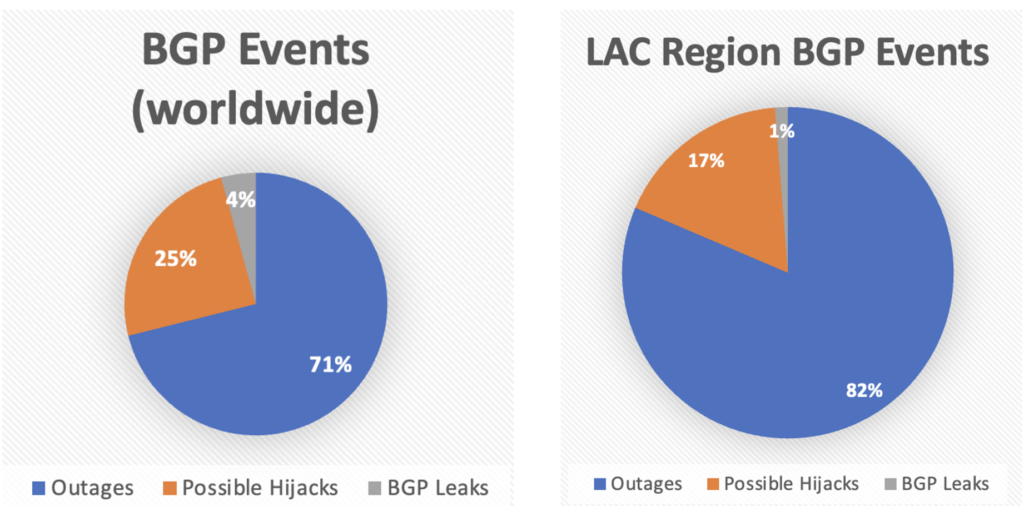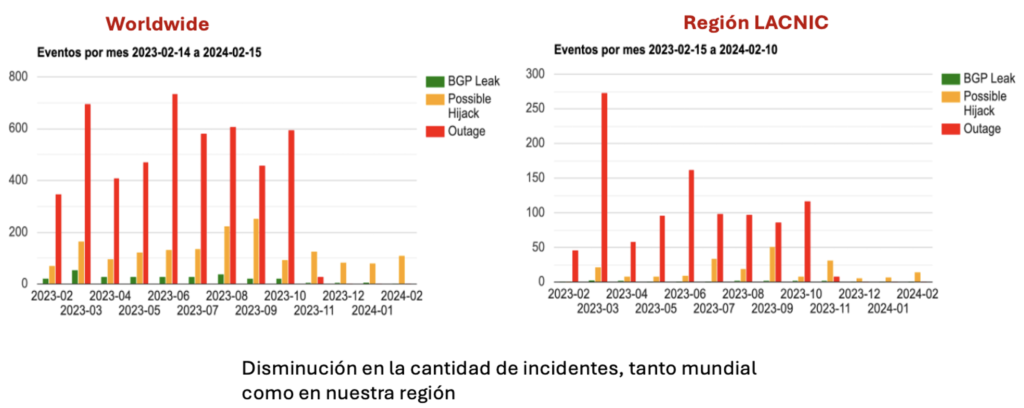BGP Stream: An Analysis of One Year of BGP Incidents
04/03/2024

By Alejandro Acosta, R&D Coordinator at LACNIC
LACNIC presents the first webpage designed to show incidents and an analysis of Border Gateway Protocol (BGP) measurement data in Latin America and the Caribbean.
MAIN INCIDENTS. In addition to a summary of the information, the page shows three main types of events: possible network hijacks, BGP outages, and route leaks.
Possible hijacks refers to the illegitimate takeover of groups of IP addresses by corrupting Internet routing tables. This typically occurs when an Autonomous System announces a prefix that it does not originate.
Outages refers to the loss of visibility of network prefixes by a majority group of sensors.
Route leaks, as the name suggests, refers to the —potentially— unintentional announcement of a network prefix via BGP. For example, in a private peering traffic exchange, when one of the participants announces the peer’s prefix to the Internet. This case is the most difficult for algorithms to detect, so some of these incidents are not identified.
How is the data obtained?
(Free access, no subscription required)
This initiative uses Cisco BGP Stream, an automated process that selects the largest and most important incidents, providing information on the nature of the event and the ASNs involved.
The information is openly published, as LACNIC believes that it is important for engineers, network administrators, and organizations to gain insights into the most common incidents in the region and raise awareness about the situation.
This allows quickly investigating events, the rapid development of complex prototypes and tools, as well as large-scale monitoring applications (e.g., detecting connectivity outages, attacks, or BGP hijacks).
The views expressed by the authors of this blog are their own and do not necessarily reflect the views of LACNIC.


